Day 16 – The Road To Enlightenment – Walking The Saigoku Kannon Pilgrimage – From Kokawa-dera, Temple #3 In Wakayama to Mount Inunaki, Japan

Day 16 – The Road To Enlightenment – Walking The Saigoku Kannon Pilgrimage – From Kokawa-dera, Temple #3 In Wakayama to Mount Inunaki, Japan
This morning, when I woke up, Jules was already awake and reading the news.
The frown on his face meant that the stock market had dropped significantly, another thousand coronavirus points.
We spoke about how we should focus on the blessings of today, and not worry about the uncertainties of the imagined future.
But we had very little time to talk.
We had to pack, eat breakfast and start our day early.
Breakfast at our hotel reflected a very careful concern for cleanliness. Traditional favorites were adjusted to these coronavirus times.
They still had a buffet, but each item was packaged in a small individual bowl with a plastic cover, or covered by a cling-film plastic wrap.
Each guest got an additional bento box, filled with seasonal items.
The favorite item in my bento box was the cherry blossom mochi, pounded rice cakes sprinkled with honeyed lotus petals.
Temple #3, Kokawa-dera, was founded in the year 770 AD.
It is located in a quiet small town called Kokawa.
As we walked through the town to the temple, we passed by posts along the way, featuring ceramic tiles illustrated with paintings from an old scroll, telling the legend of the temple.
This ancient scroll illustrates the legend of the origin of the main statue of the Bodhisattva Senju Kannon (Avalokitesvara), the main deity of Kokawa-dera Temple.
The Senju Kannon is a deity with a Thousand arms.
There are two legends associated with this temple.
According to the Kokawa Engi-emaki handscroll, in the year 770, during a hunt, Ootomo no Kujiko, who was a skilled hunter, saw a beam of light in the forest.
Awestruck, he decided to build a hut in that location, and often visited it to pray.
One day, a young boy arrived at the hut and asked Kujiko to let him stay for a while.
Kujiko agreed and told the boy how he had seen the heavenly beam of light at this location.
The next morning the boy offered to carve a Buddha statue as a token of his gratitude.
Seven days later, Kujiko came again to check on the boy, only to find that the boy had disappeared without a trace.
In his place, was a statue of Senju thousand armed Kannon.
Kujiko enshrined the statue in his hut, which is today the beautiful Kokawa-dera Temple.
The second legend in the scroll depicts how Kannon healed the sick daughter of a millionaire in Kawachi.
In gratitude for this miracle, the millionaire’s entire family entered the priesthood, working for Kokawa-dera Temple as Bettō (secular) monks.
Over time, Kokawa-dera Temple became a popular temple and earned a spot on the Saigoku Kannon Pilgrimage.
But in 1585 Kokawa-dera Temple joined forces with Negoro Temple to fight against the powerful ruler Toyotomi Hideyoshi.
They lost the war, and the temple was reduced to ashes.
Currently, the oldest building in the temple complex is the one rebuilt by the 8th Shogun, lord Tokugawa Yoshimune, in the Edo Period.
The temple occupies large grounds with a beautiful rock garden, a pond, many old temple buildings and really stunning landscaping.
The cherry trees were in full bloom while we visited, and a few photographers walked around with big cameras to try to capture the glory of the nature at this ancient temple.
At the main hall, we met a Japanese pilgrim dressed for walking.
We talked to him, asking if he was walking the Saigoku pilgrimage.
He explained he was not.
He was going to walk the Shikoku 88 temples route, and had stopped at this famous temple to pray and buy an amulet, to protect him on his difficult journey.
Later we saw a sign by the temple, stating that many pilgrims who plan to walk in western Japan or embark on a long pilgrimage, buy a good luck amulet at this temple.
We wished the pilgrim a safe journey and went to pray and get our stamps.
At the Go-Shuin office, the monk stamped our book and scroll and a friendly local man who spoke English came to chat with us.
He helped us complete a form that we had gotten at Temple #1, which included stamps from all three ancient temples in Wakayama prefecture.
The monk took the form and gave each one of us a commemorative towel with the Saigoku pilgrimage on it.
Since the local man was so friendly, I decided to ask him about our walking route through the mountains.
Google maps refused to show that the direct route through the mountains was passable on foot.
It kept rerouting me to the twisted mountain road that summited the mountains and went down again, adding many more kilometers to our journey and climbing nearly 1000 meters up and 800 meters down.
But the route that I wanted to walk was not a highway, which I know we are not allowed to walk on, so I was puzzled as to why we couldn’t walk on it.
The man knew the route, but said it was impossible to walk it.
I asked why.
He said it was too far.
We’d better go by bus, which leaves Kokawa station a few times per day.
I repeated that we are walking the Saigoku, and just wanted to know if the road is walkable, but he was adamant that it was too far.
I dropped the subject and Jules and I thanked him and went to see the ancient wooden Kannon statue located in the main hall.
There is a charge to enter the main hall to see the cultural treasures, but it was very much worth it.
The thousand armed Kannon statue, which I could not photograph, was stunning.
There were Arhats or Rakans and many guardians, as well as a tiger dragon and a beautiful Buddha.
After our prayers and chanting, we dressed up warmly, shouldered our backpacks and started walking up into the mountains.
It was not scheduled to rain today, but in the mountains it was cloudy and it drizzled.
We took a tea break in a sheltered wooden structure along the road.
During the season, farmers use the shed to sell their produce.
But it was empty now, with only a few wooden tables and a wooden bench.
We made our tea and ate a light snack.
We walked by the side of the car road.
Cars and trucks were driving fast, but the mountain road was beautiful, with flowering trees on tall peaks all around us.
I felt happy and full of gratitude as we walked.
We climbed up and up for about two hours, then we entered a tunnel, and emerged at the mountain pass.
From there we walked mostly down the rest of the way.
By lunchtime, we stopped in to a simple Onsen, to rest and have a lunch break.
We were not really hungry, but it was cold and drizzling, so we thought it would be a good idea to dry out in the warm restaurant.
The owners were curious about the two foreign walkers who seemed to manifest out of the clouds.
I explained who we were and what we were doing there.
They made us a lunch of baked rice with mountain vegetables and an udon noodles with tempura.
From there, we continued on to our onsen hot springs Ryokan on Mount Inunaki.
It is an elegant traditional Guesthouse, that reminds me of the old upscale ryokans, as existed in Japan of the olden days.
Discrete and protective of the privacy of their guests, these elegant guesthouses used to boast that you could come in, bathe in the hot springs, have a fabulous dining experience featuring local ingredients and leave, all without seeing or hearing any other guests.
At check in, I got to choose whatever design yukata summer kimono I liked.
I chose a peony flower and butterfly yukata with a yellow and purple obi, to tie my yukata.
We got a beautiful room with the fast flowing Kashii River right under our window.
The room was preheated for us, and the tea was hot, and the cookies crisp, with cold water and hot towels on the table.
It felt like we had arrived in heaven.
There is nothing like walking, seeing the scenery from the ground and smelling the flowering trees.
Dining is done inside the rooms.
There are dumb-waiters to bring the food, and cabinets in front of each room, to place trays of used dishes.
Before dinner I took a soak in the indoor and outdoor hot spring baths.
There were a few other guests in the guesthouse, but it was not crowded at all.
I was in the hot spring with only one other woman.
Dinner was a feast of eleven dishes.
All tasted lovely.
The dessert was a small soy milk pudding with Sakura cherry blossom flavor.
After dinner, they cleared the plates and made our futon beds for the night.
We asked for double futons for cushioning, and retired early.
It was a great day of what had turned out to be fairly easy walking.
We had a fabulous day.
With Sakura blossom blessings,
Tali and Jules
Daily stats:
Steps walked – 25,500
19 km. walked
Active walking time – 4.5 hours
Total walking time today – 6 hours.
Total walking distance on the Saigoku to date – 295 km
Temple Visited:
Kokawa-dera, Temple #3, Wakayama

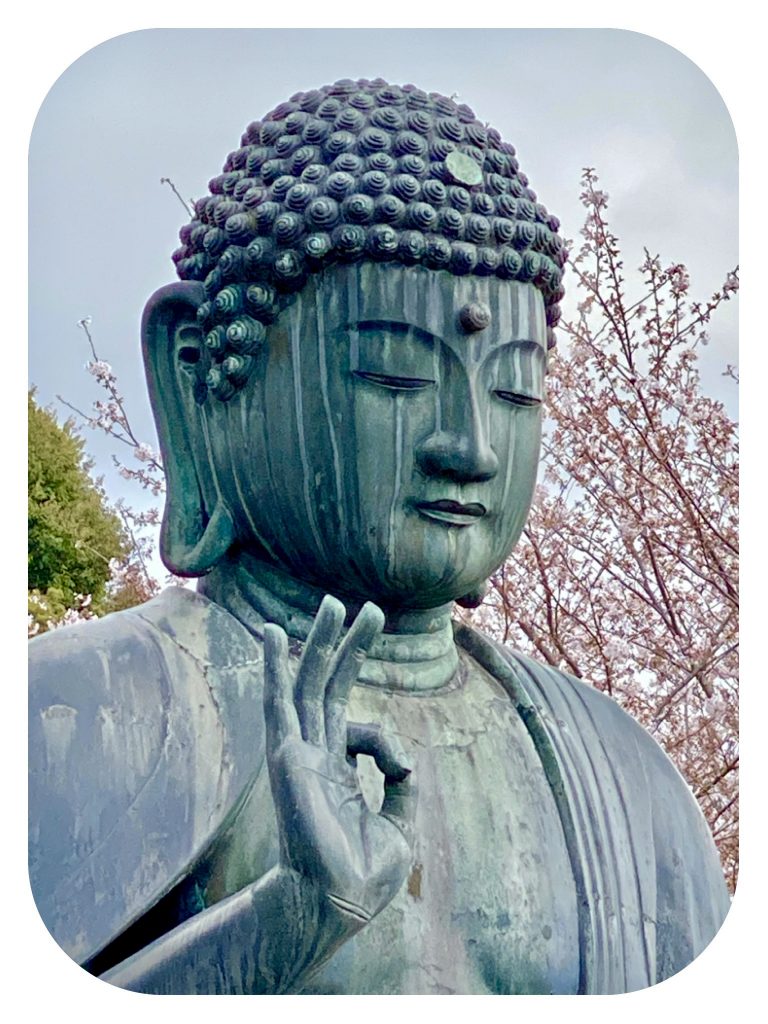
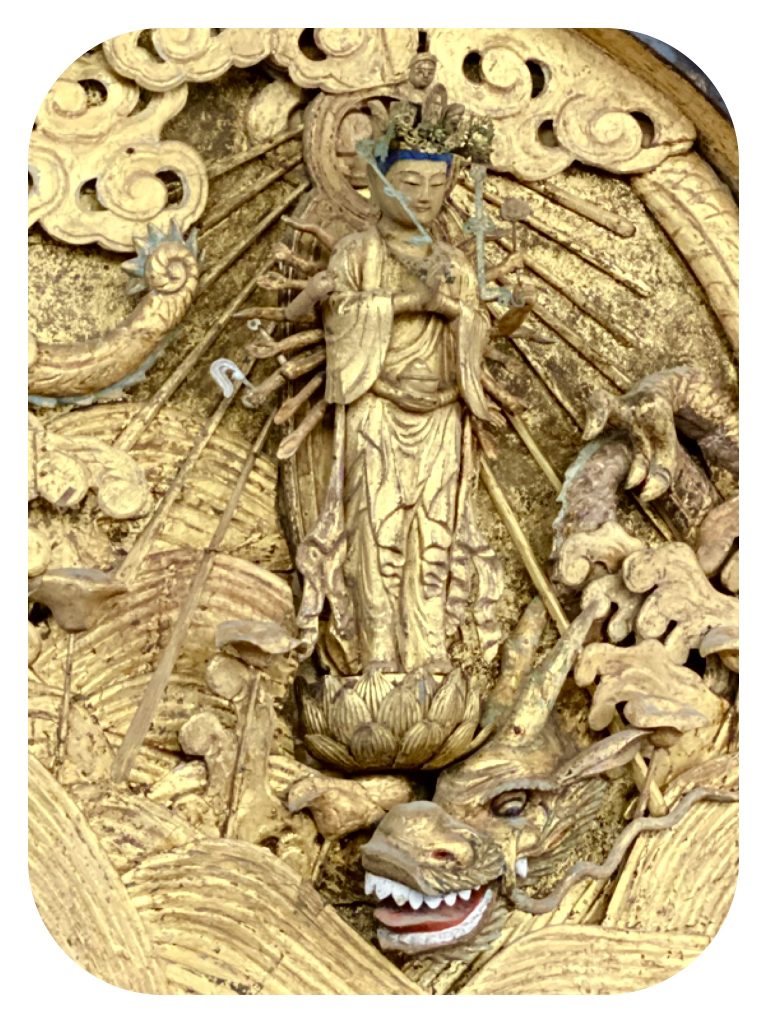







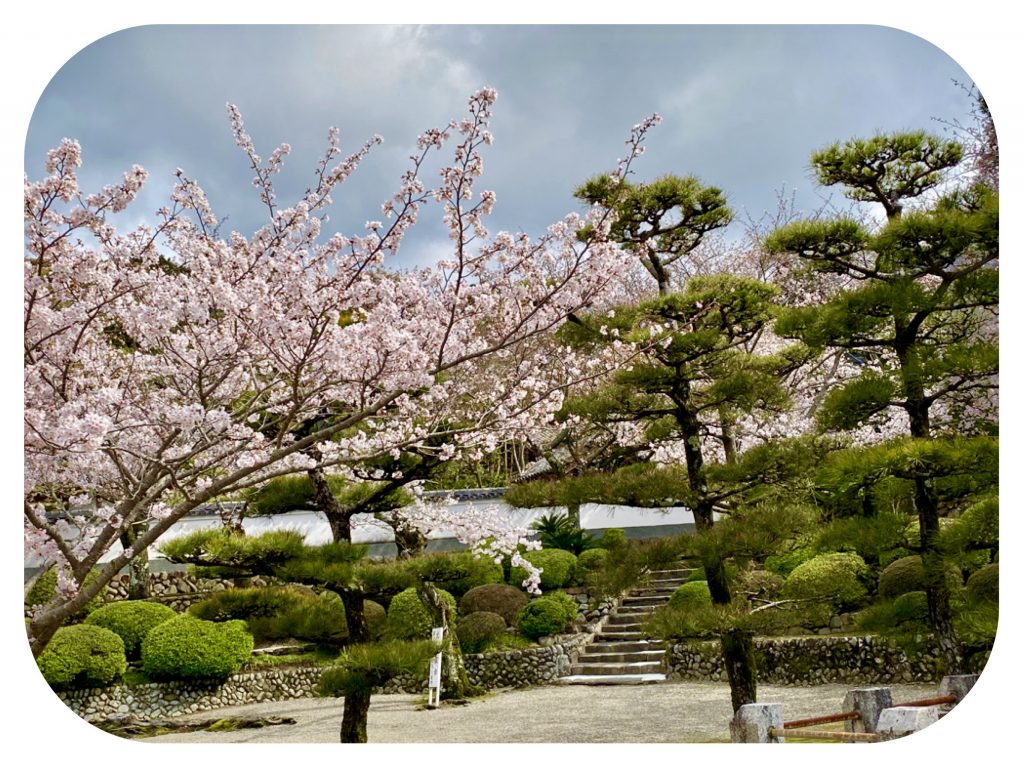


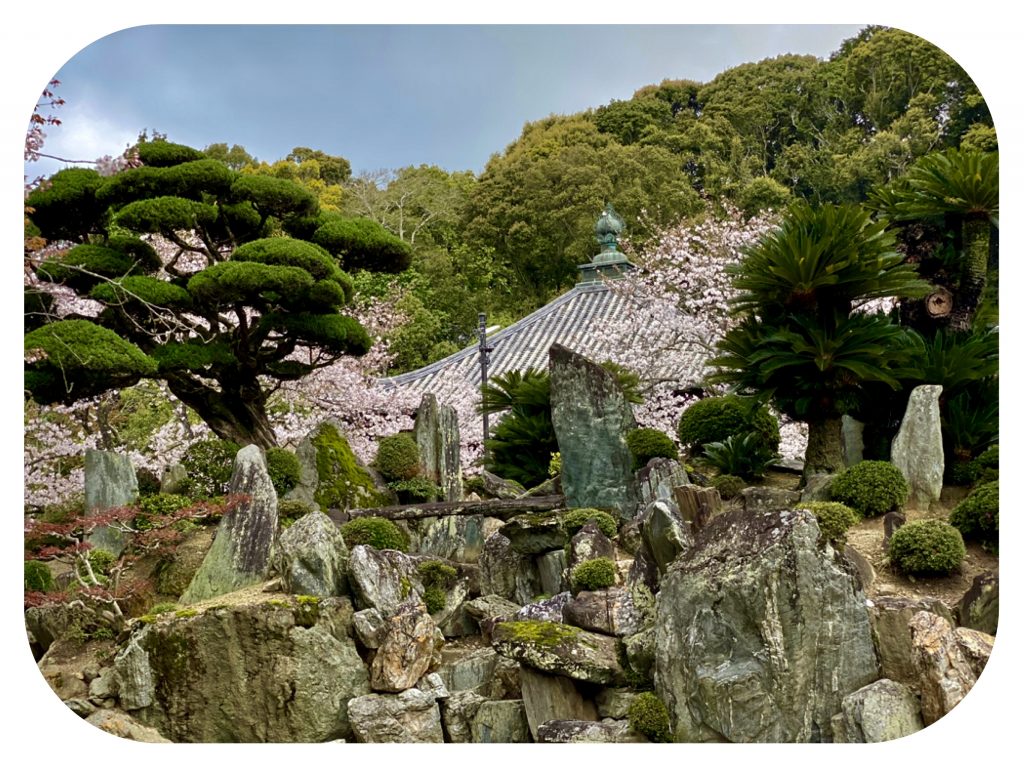



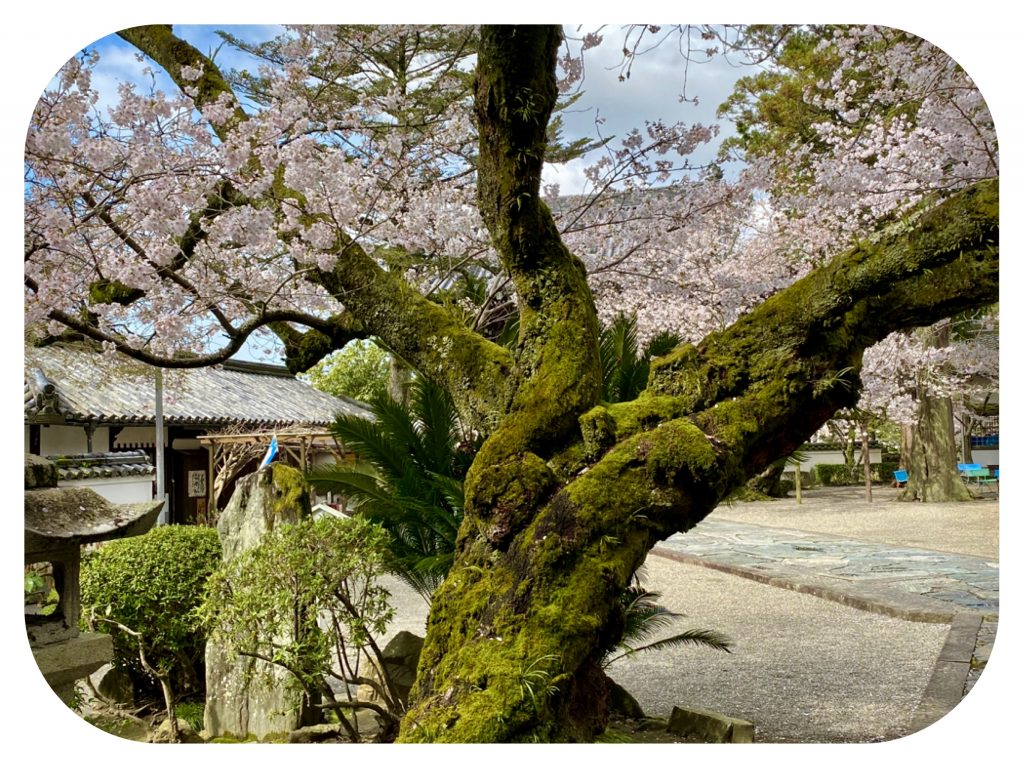
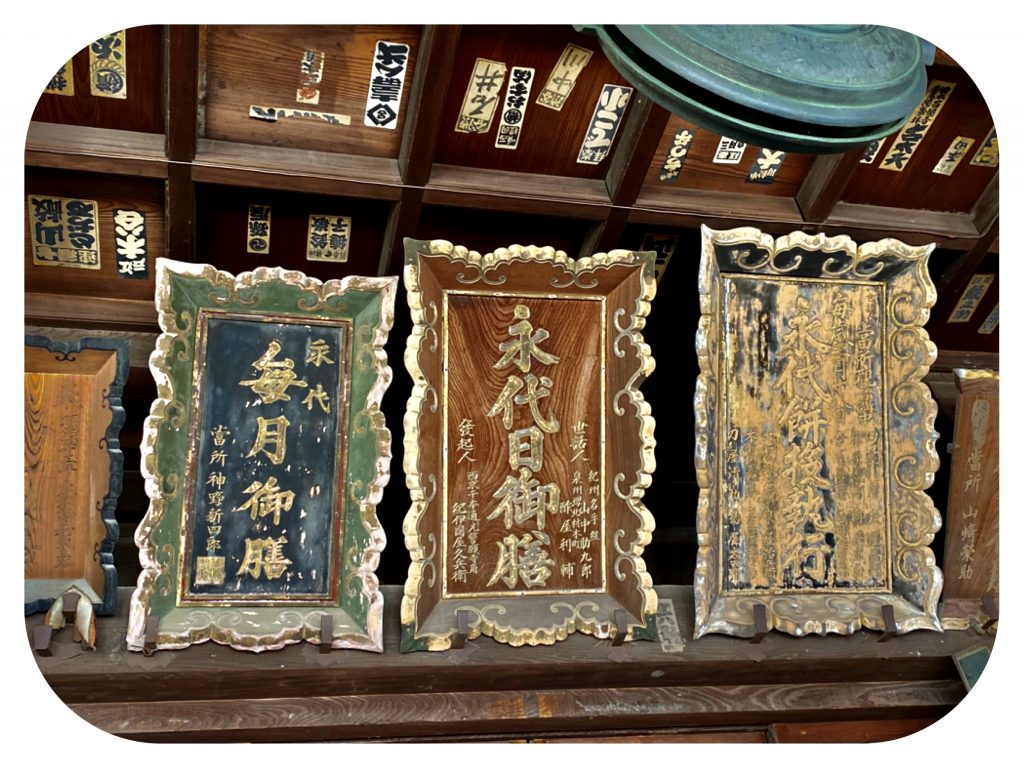
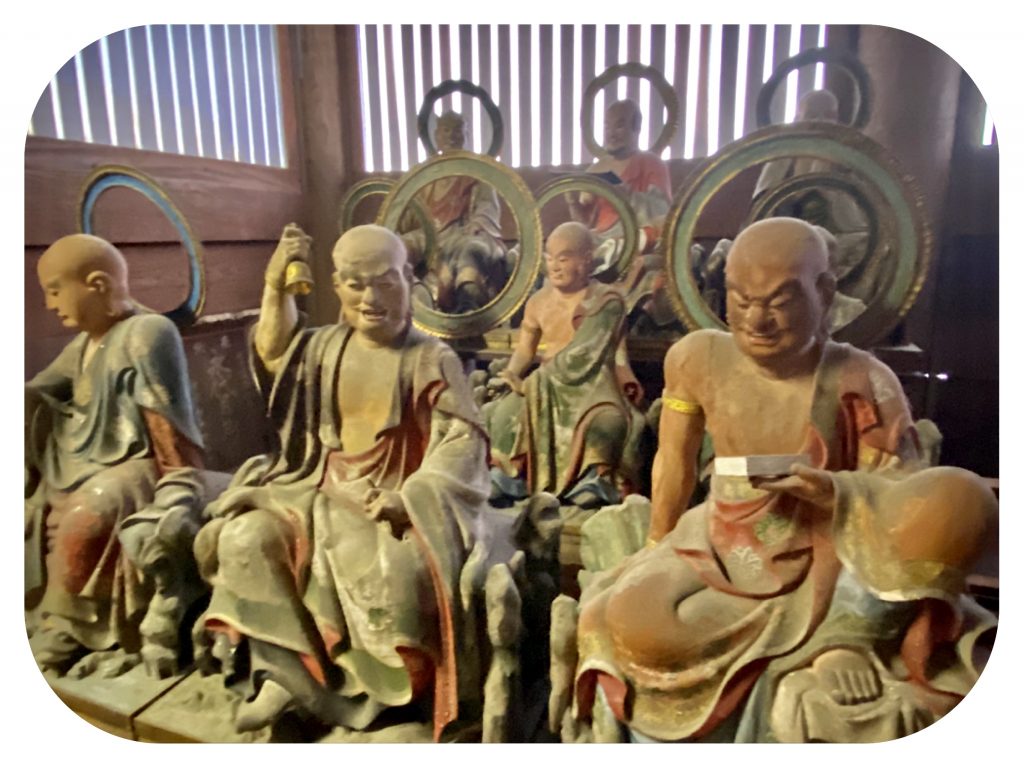


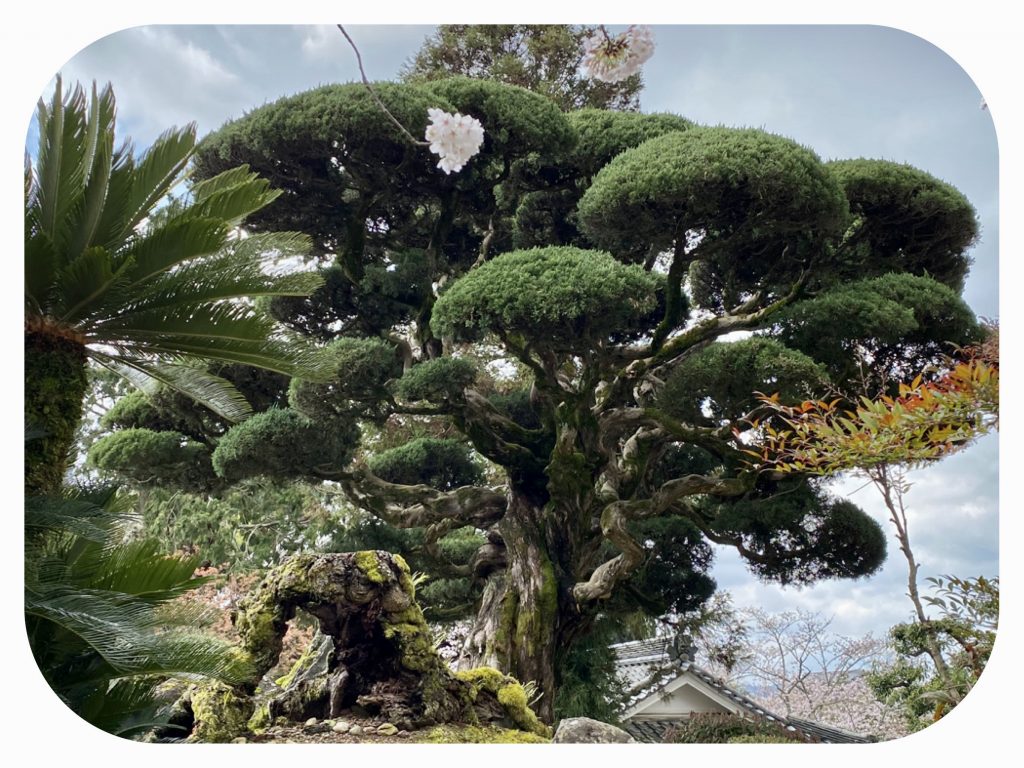




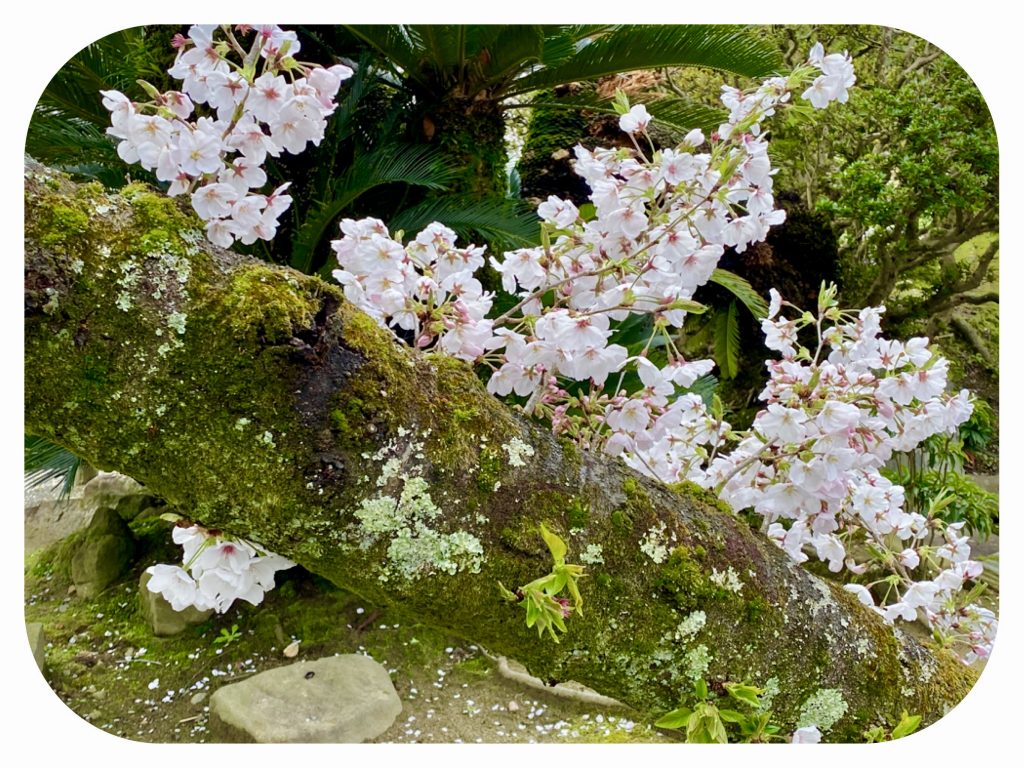
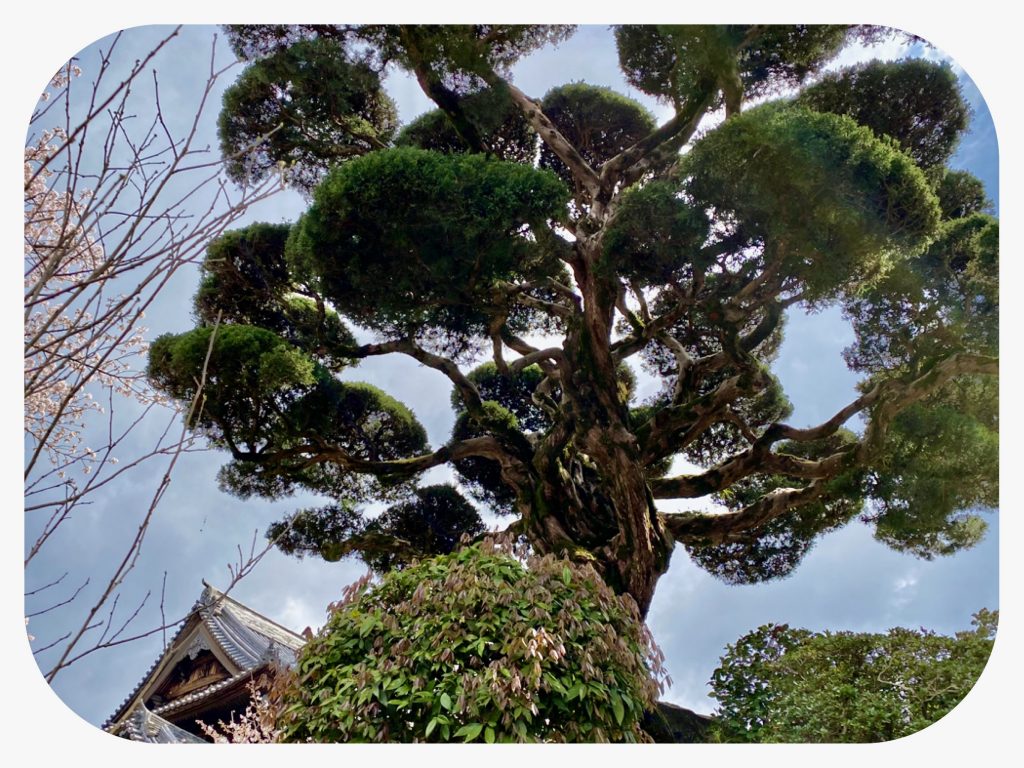












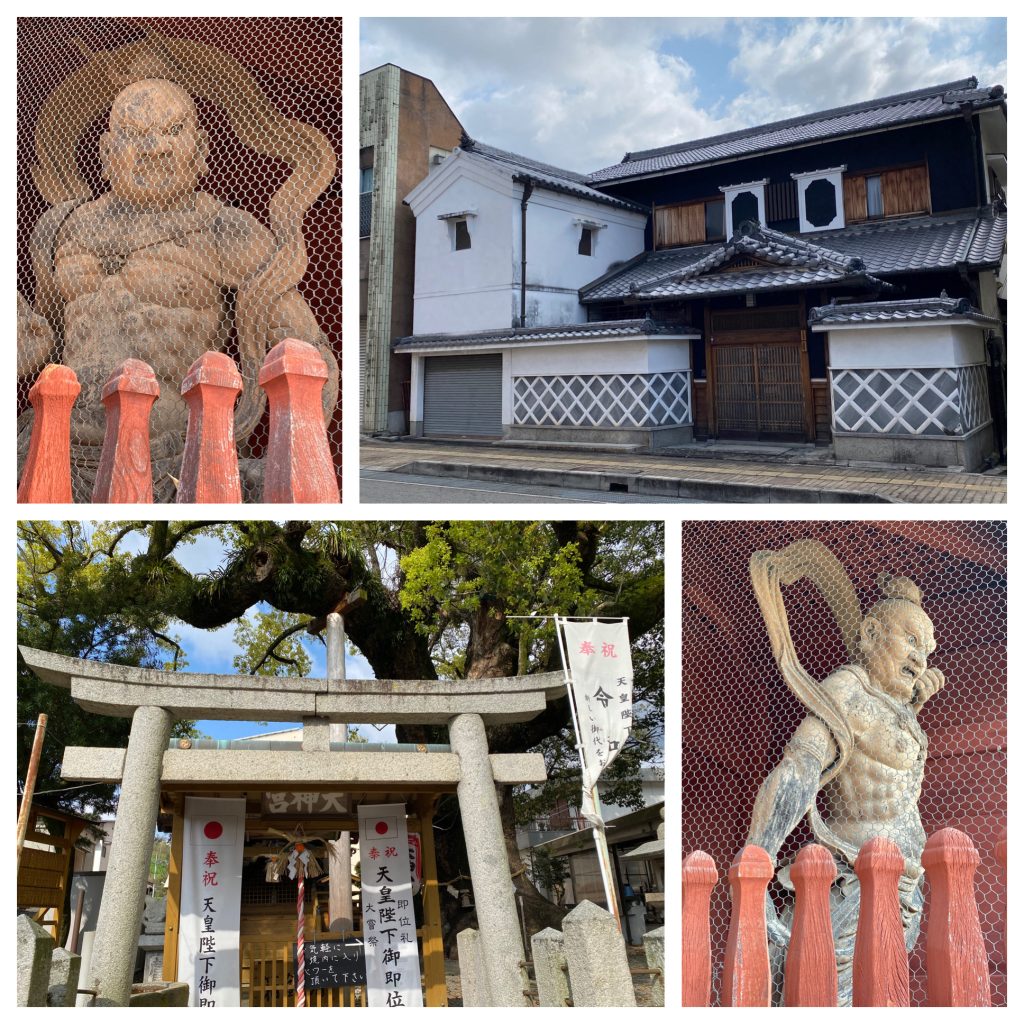

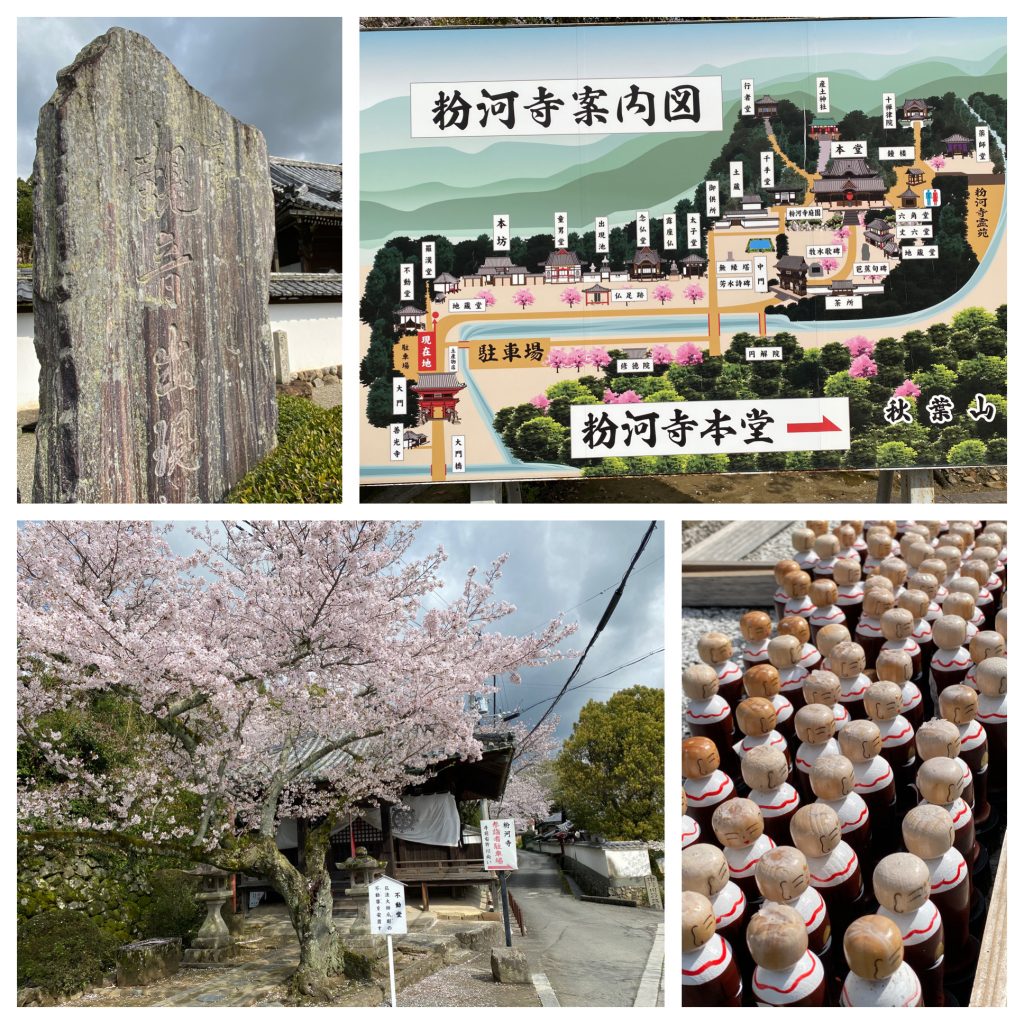



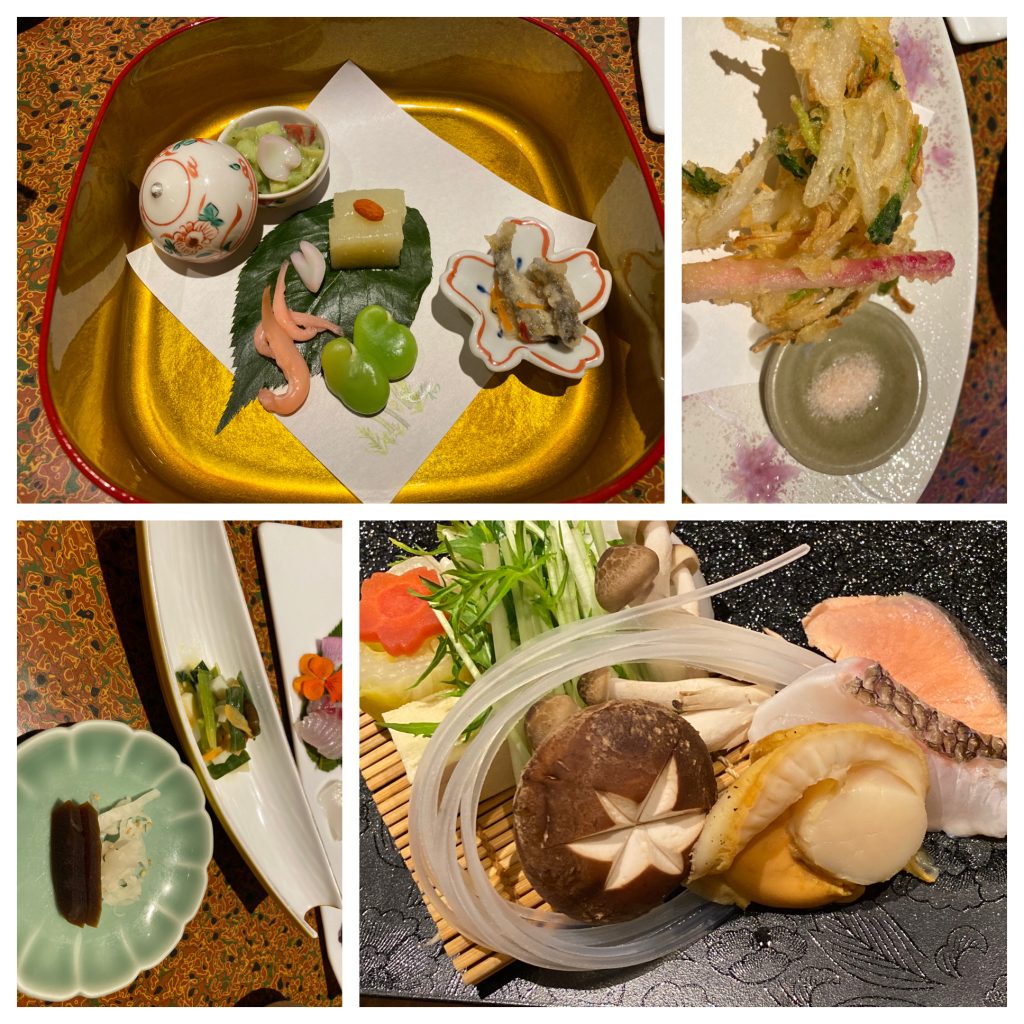



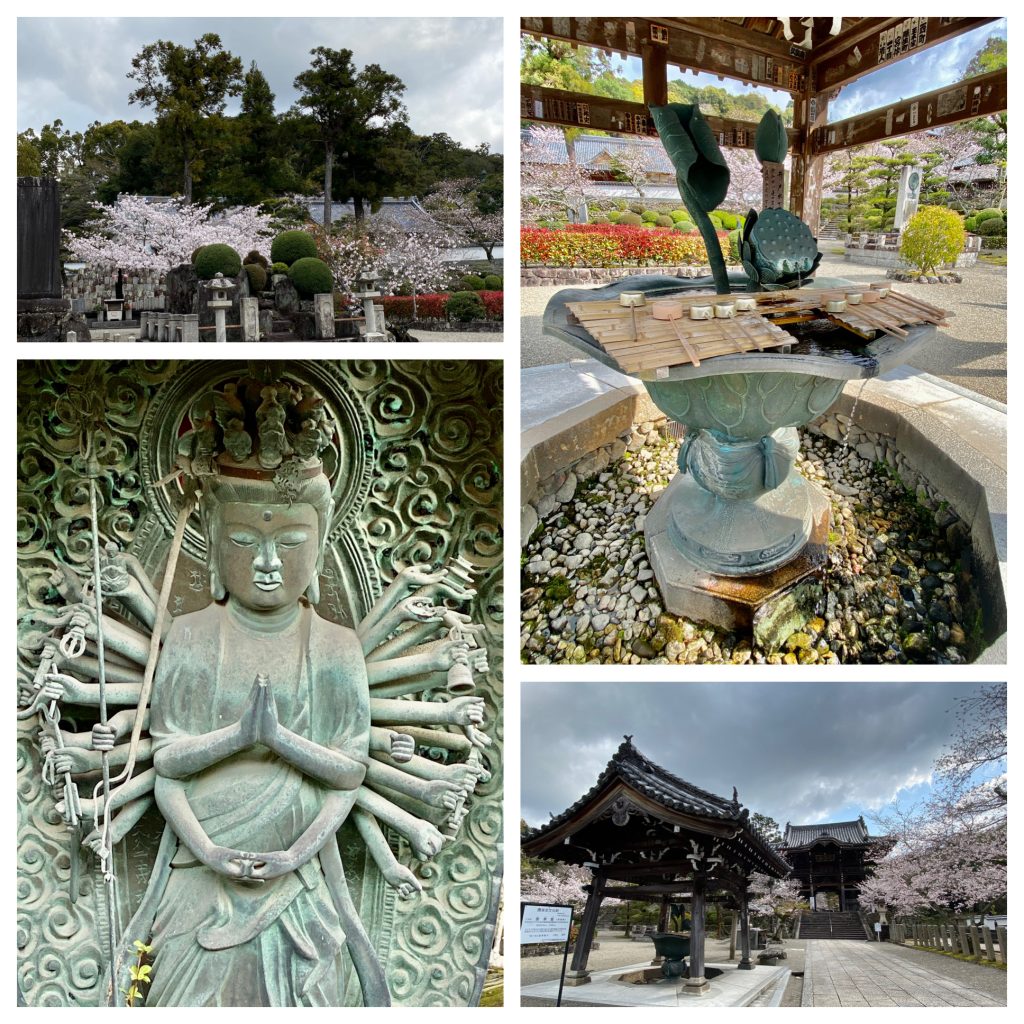

Hi Tali,
I was able to find a map with some paths from your actually hiking area.
https://www.outdooractive.com/en/map/#bm=topo%3Atopo&fu=1&zc=17,135.50875,34.39203
https://www.outdooractive.com/en/map/#bm=osm%3Asummer&fu=1&zc=17,135.50875,34.39203
you may try this links to see if it helps.
regards Paul
Thanks Paul, it is very kind of you! It might be helpful at times.
Many thanks,
Tali